SGLT1/2 as the potential biomarkers of renal damage under Apoe-/- and chronic stress via the BP neural network model and support vector machine
- PMID: 36035950
- PMCID: PMC9405420
- DOI: 10.3389/fcvm.2022.948909
SGLT1/2 as the potential biomarkers of renal damage under Apoe-/- and chronic stress via the BP neural network model and support vector machine
Abstract
Background: Chronic stress (CS) could produce negative emotions. The molecular mechanism of SGLT1 and SGLT2 in kidney injury caused by chronic stress combined with atherosclerosis remains unclear.
Methods: In total, 60 C57BL/6J mice were randomly divided into four groups, namely, control (CON, n = 15), control diet + chronic stress (CON+CS, n = 15), high-fat diet + Apoe-/- (HF + Apoe-/-, n = 15), and high-fat diet + Apoe-/- + chronic stress (HF+Apoe-/- + CS, n = 15) groups. The elevated plus maze and open field tests were performed to examine the effect of chronic stress. The expression of SGLT1 and SGLT2 in the kidney was detected. The support vector machine (SVM) and back propagation (BP) neural network model were constructed to explore the predictive value of the expression of SGLT1/2 on the renal pathological changes. The receiver operating characteristic (ROC) curve analysis was used.
Results: A chronic stress model and atherosclerosis model were constructed successfully. Edema, broken reticular fiber, and increased glycogen in the kidney would be obvious in the HF + Apoe-/- + CS group. Compared with the CON group, the expression of SGLT1/2 in the kidney was upregulated in the HF + Apoe-/- + CS group (P < 0.05). There existed positive correlations among edema, glycogen, reticular fiber, expression of SGLT1/2 in the kidney. There were higher sensitivity and specificity of diagnosis of SGLT1/2 for edema, reticular fiber, and glycogen in the kidney. The result of the SVM and BP neural network model showed better predictive values of SGLT1 and SGLT2 for edema and glycogen in the kidney.
Conclusion: In conclusion, SGLT1/2 might be potential biomarkers of renal damage under Apoe-/- and chronic stress, which provided a potential research direction for future related explorations into this mechanism.
Keywords: SGLT1; SGLT2; atherosclerosis; chronic stress; kidney; support vector machine.
Copyright © 2022 Hu, Wang, Meng, Li, Xu, Wu, Shan, Chen, Xu, Gong, Chen, Li and Liu.
Conflict of interest statement
The authors declare that the research was conducted in the absence of any commercial or financial relationships that could be construed as a potential conflict of interest.
Figures
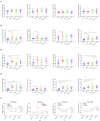
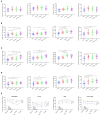

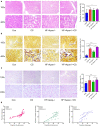

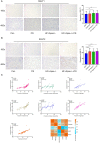

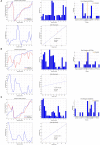
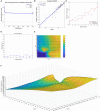
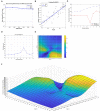
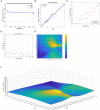
Similar articles
-
Adrenal SGLT1 or SGLT2 as predictors of atherosclerosis under chronic stress based on a computer algorithm.PeerJ. 2023 Aug 30;11:e15647. doi: 10.7717/peerj.15647. eCollection 2023. PeerJ. 2023. PMID: 37663275 Free PMC article.
-
Use of systems pharmacology modeling to elucidate the operating characteristics of SGLT1 and SGLT2 in renal glucose reabsorption in humans.Front Pharmacol. 2014 Dec 10;5:274. doi: 10.3389/fphar.2014.00274. eCollection 2014. Front Pharmacol. 2014. PMID: 25540623 Free PMC article.
-
Citrate Synthase and OGDH as Potential Biomarkers of Atherosclerosis under Chronic Stress.Oxid Med Cell Longev. 2021 Sep 8;2021:9957908. doi: 10.1155/2021/9957908. eCollection 2021. Oxid Med Cell Longev. 2021. PMID: 34539976 Free PMC article.
-
Development of SGLT1 and SGLT2 inhibitors.Diabetologia. 2018 Oct;61(10):2079-2086. doi: 10.1007/s00125-018-4654-7. Epub 2018 Aug 22. Diabetologia. 2018. PMID: 30132033 Free PMC article. Review.
-
Effect of Sodium Glucose Cotransporter 2 Inhibitors With Low SGLT2/SGLT1 Selectivity on Circulating Glucagon-Like Peptide 1 Levels in Type 2 Diabetes Mellitus.J Clin Med Res. 2017 Sep;9(9):745-753. doi: 10.14740/jocmr3112w. Epub 2017 Jul 27. J Clin Med Res. 2017. PMID: 28811850 Free PMC article. Review.
Cited by
-
Adrenal SGLT1 or SGLT2 as predictors of atherosclerosis under chronic stress based on a computer algorithm.PeerJ. 2023 Aug 30;11:e15647. doi: 10.7717/peerj.15647. eCollection 2023. PeerJ. 2023. PMID: 37663275 Free PMC article.
-
Relationship between CXCR4 and GNG4 in the Brain and Chronic Stress-Induced Atherosclerosis.J Mol Med (Berl). 2025 Jul 22. doi: 10.1007/s00109-025-02572-7. Online ahead of print. J Mol Med (Berl). 2025. PMID: 40694065
References
-
- Siegrist J. [Psychosocial stress at work and disease risks: scientific evidence and implications for practice]. Internist. (2021). - PubMed
-
- Bucsek MJ, Qiao G, MacDonald CR, Giridharan T, Evans L, Niedzwecki B, et al. . β-Adrenergic signaling in mice housed at standard temperatures suppresses an effector phenotype in CD8(+) T cells and undermines checkpoint inhibitor therapy. Cancer Res. (2017) 77:5639–51. 10.1158/0008-5472.CAN-17-0546 - DOI - PMC - PubMed
LinkOut - more resources
Full Text Sources
Research Materials
Miscellaneous

